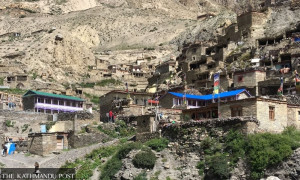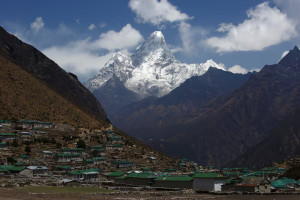National
A majority of handmade paper factories closed down in Bajhang
Fifteen out of 17 handmade paper factories in Bajhang district have closed down in recent years, putting many locals out of job, according to locals and the factory operators.
Basant Pratap Singh
Fifteen out of 17 handmade paper factories in Bajhang district have closed down in recent years, putting many locals out of job, according to locals and the factory operators. A majority of these factories were operated by the local residents, and since the factories’ shut down, around 100 locals have lost their source of livelihood.
Ratan Jethara, a technician at the Kalika Handmade Paper Factory in Dantola, said, “I used to make Rs 15,000 a month working in the paper factory. Now, I have to work odd jobs to make a living.”
Kalika Handmade Paper Factory was operated by Kalika Community Forest in Talkot Rural Municipality. According to locals, the factory produced handmade papers worth Rs 4 million every year. “The management committee of the Kalika Handmade Paper Factory could not operate the industry well,” said Jethara. “The representatives of the management committee only cared about their profits.”
Malika Handmade Paper Factory, one of Nepal’s first community handmade paper factory, closed down two years ago due to management issues. Its infrastructures, including various equipments worth thousands of rupees, have been left unattended for a long time, rendering them useless.
“Some machines were stolen while the remaining ones have developed rust stains,” said Rabindra Kami, a resident of Jayaprithvi Municipality-1. Locals said the operators had resumed paper production for a few days after they received financial help from some organisations. “The paper factory turned into a begging tool for some people here,” said Narendra Singh, a local man of Jayaprithvi Municipality-1. Around 300 households have their shares at Malika Handmade Paper Factory. Consumers said that the account of the factory has not been audited for the last 18 years.
Lokta plant, a raw material used to make handmade paper, is found in abundance in the district. However, since the shutting down of factories, locals complain of being unable to sell lokta.
“We used to make around Rs 500 to Rs 700 every day by collecting lokta, but since the factories’ shut down, we have been unable to sell lokta,” said Punidevi Dwal of Daya in Masta Rural Municipality. “I am finding it difficult to maintain my daily household expenses.”
According to the operators, the factories had to be closed down due to high production cost, a shortage of raw materials, and a lack of technical resources. Pyarilal Jethara, operator of the Himalaya Handmade Paper Factory, said that the factories were closed after they failed to generate enough raw materials for the products.
“Locals have stopped collecting lokta from the forests because there’s more money in foraging and collecting medicinal herbs including satuwa. The lack of technical expertise made it difficult for us to operate factories as well.”
However, Mangal Khadka, a representative of a local NGO working in the district, said there’s sufficient amount of raw materials in the district. “A majority of the factories run by the communities have closed down because
the management couldn’t do their jobs well. Factories with single ownership are running smoothly and are making good money,” said Khadka.
Nepali handmade paper, also known as lokta paper, is used widely for official and ceremonial purposes including publishing books, note books, diaries, visiting cards and ID cards. A collection of 200 sheets, which makes one ‘Kori’, sells from Rs3,500 to Rs7,000 in Kathmandu, depending upon the paper weight and quality.
Nepali handmade paper produced in Bajhang is highly coveted in many countries including Japan, South Korea and Germany. The lokta plant is found in 56 districts of the country. There are many species of lokta plant, but only five are considered suitable for manufacturing lokta paper.




 17.12°C Kathmandu
17.12°C Kathmandu















